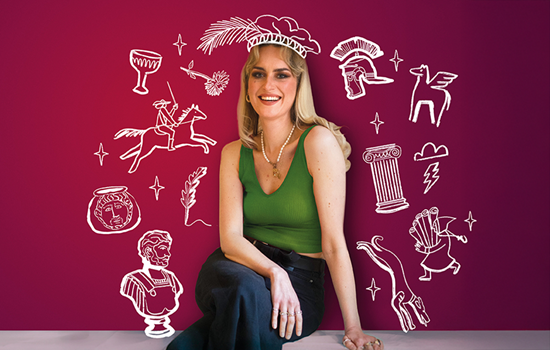1. Learn something new at our events
This winter enjoy captivating stories and discover hidden gems with our guided tours. Explore the rich history of Bolsover's Little Castle and delve into the secrets of Queen Victoria's royal household at Osborne. There's even the opportunity to go deep underground at Dover Castle to discover the Dumpy level. This was a space intended to be occupied by Regional Government in the event of nuclear war.
Now is the perfect time to plan for the upcoming February half term. Prepare to join characters from the past for heritage-inspired hijinks and hands-on shenanigans. With events taking place across the country, there's plenty to choose from that will ensure a fun day out for all ages.
Find out more2. Wander through winter gardens
There's nothing like a fresh winter walk through a beautiful historic garden. Our castles, halls and stately homes are enchanting in the colder seasons. Make the most of rewarding garden walks and sparkling wintry views.
Highlights include Belsay Hall, Castle and Gardens’ 28m Douglas Fir sprinkled in snow, Kenwood’s ponds and woodlands sparkling in the winter frost, and the scented orchids at Down House. Even your local sites offer something new in the winter season.
Find out more3. Revive a medieval tradition
The theory that it's bad luck to leave Christmas decorations up beyond Twelfth Night (around 6 January) is a more modern one. During the Medieval period, decorations were kept up until Candlemas (2 February). This date marked the official end of Christmas and was celebrated with great feasts. Candles intended to be used in churches in the coming year would be blessed on that day. Bring cheer to the winter months and keep your Christmas decorations up through January.
Find out more4. Discover our collection
We care for more than 700,000 objects spanning over 5,000 years of history.
Some of our most intriguing items include Aldborough Roman site’s face pot, Rievaulx Abbey’s chess pieces and Bayham Abbey’s pilgrim badge. There is also the impressive Wernher Collection of medieval and early modern European art at Ranger’s House.
Every piece in our collections tells a story about England's past and helps us to understand our present. Your donations help to preserve these objects and ensure they last for future generations.
Find out more5. Explore our spectacular free-to-enter sites
Combat the January blues with a stroll through one of our free-to-enter sites.
During the winter months, many of our smaller outdoor sites remain open throughout the week. From mysterious prehistoric monuments to Roman ruins, there’s plenty of England’s past to enjoy in peaceful settings.
Our members help to protect these important sites. By becoming a member you can enjoy unlimited access to 400 sites, free entry for kids and an exclusive members’ magazine.
Find out moreThe Month in History
- Captain James Cook's ship, the Resolution, became the first vessel to cross the Antarctic Circle on the 17 January 1773. A slate plaque marks the site where his London house used to stand.
- On 28 January 1547 Henry VIII died at Whitehall Palace. He spent much of his childhood at Eltham Palace, where the magnificent medieval Great Hall still survives today.
- The classic horror novel Frankenstein was published anonymously by Mary Shelley on 1 January 1818. Tilbury Fort on the bank of the Thames features in the story and is one of our many sites with literary links.
- Virginia Wolf was born on 25 January 1882. She was one of the most influential writers of the 20th century, writing ground-breaking novels such as Mrs Dalloway (1925), To the Lighthouse (1927) and Orlando (1928). Her former home in Fitzrovia is now marked by a blue plaque.
More to explore
-

Inspire Me
We’ve handpicked our favourite articles, guides and stories to inspire your next day out. Find out what's new - your next adventure starts here...
-

THE ENGLISH HERITAGE PODCAST
Every object has a story to tell - but how can one mystery item lead us on a journey through history, people and places? Amy Matthews explores tales from unexpected places.
-

Become a member today
Enjoy unlimited access to hundreds of historical places with an annual membership. Plus there's free entry for up to six children! Memberships start from £42 a year.
